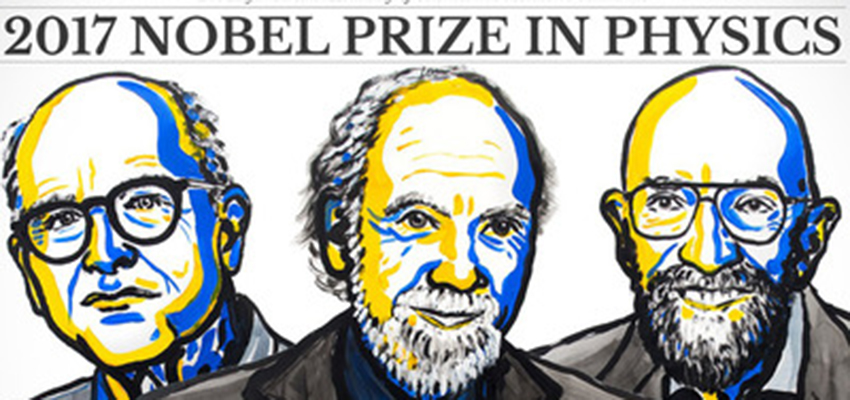
HWS News
4 October 2017 • STEM Nobel Prize Awarded for Gravitational Waves Discovery
The Nobel Prize in Physics has been awarded for the historic discovery of gravitational waves, a scientific breakthrough made possible thanks to a global research team of which Professor of Physics Steven Penn is an instrumental and longstanding member.
The Royal Swedish Academy of Sciences named Rainer Weiss of Massachusetts Institute of Technology, and Barry Barish and Kip Thorne of California Institute of Technology as the Nobel Prize winners this week for their invaluable contributions to the Laser Interferometer Gravitational-Wave Observatory (LIGO) detectors which scientists used to observe gravitational waves for the first time in 2015. The discovery confirmed a major prediction of Albert Einstein's general theory of relativity, launching a new pathway for understanding the universe.
Through his work, Penn has significantly contributed to the mirror substrate and coating design for the LIGO detectors. Penn discovered how to significantly reduce the thermal noise in the material fused silica, which led to the selection of fused silica for the Advanced LIGO mirror substrates and suspensions. With the upgrade, scientists will be able to increase the amount of the universe that can be probed by a thousandfold.
Penn currently chairs the LIGO Scientific Collaboration (LSC) Coating Working Group, a subcommittee of the Optics Working Group, which is developing coatings for future detectors. Penn is also a co-coordinator of a multimillion-dollar grant proposal to establish a LSC Center for Coating Research that will develop coatings for Advanced LIGO Plus, or A+, and future detectors.
In September, LSC and the Virgo collaboration, which have been sharing data and coordinating their analyses, reported their first joint discovery of gravitational waves. It was the fourth announced detection of a binary black hole system and the first significant gravitational-wave signal recorded by the Virgo detector, and highlights the scientific potential of a three-detector network of gravitational-wave detectors.
The three-detector observation from Livingston, La., Hanford, Wash., and Pisa, Italy was made on Aug. 14, 2017. "The 10-times improvement in localization obtained with three detectors is a dramatic step forward in identifying the astronomical source of the gravitational waves," Penn says. LSC scientists are also working diligently to increase detector sensitivity and bring similar improvements in detection rate.
The first unprecedented detection that made international headlines in 2016 was announced to the public as part of a live press conference by the NSF. Penn hosted a public presentation at HWS.
The detected gravitational wavesripples in space and timewere emitted during the final moments of the merger of two black holes with masses about 31 and 25 times the mass of the sun and located about 1.8 billion light-years away. The newly produced spinning black hole has about 53 times the mass of our sun, which means that about 3 solar masses were converted into gravitational-wave energy during the coalescence.
An MIT-trained physicist, Penn joined the LSC in 1998 while a postdoctoral fellow at Syracuse University. Hobart and William Smith became one of the first small colleges to join the LSC when Penn took a position in the Physics Department in 2002. In early 2017, Penn was among those involved with the LIGO research who were awarded a Breakthrough Prize: Scientists Changing the World medal lauding the landmark research.

